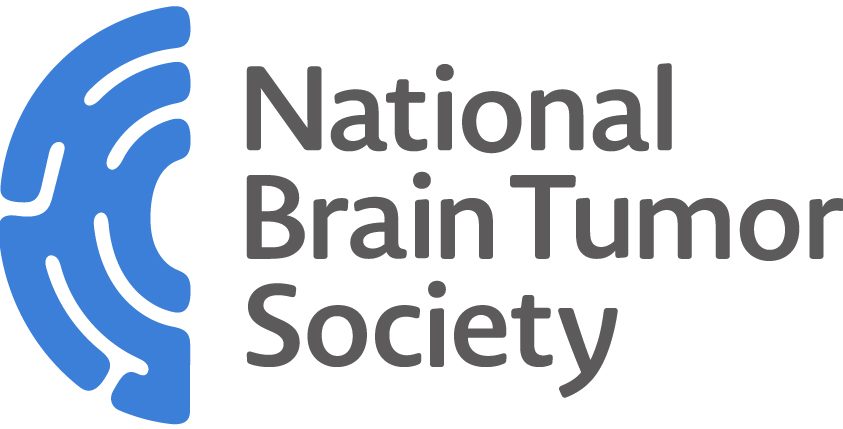Navigating Financial Challenges After a Brain Tumor Diagnosis

In this article, the team at the National Brain Tumor Society (NBTS) — a nonprofit that works tirelessly to conquer and cure brain tumors once and for all — highlights some of the unique financial challenges facing people living with brain tumors and what community members can do to find help as they navigate these burdens.
A brain tumor diagnosis can seem overwhelming and uncertain, in part because of the significant medical and financial burdens that patients and care partners face. In times like these, it’s common to feel isolated and alone.
Patients and caregivers often find solace and support through their community. Virtual support groups such as the National Brain Tumor Society’s Brain Tumor Support Conversations offer the support of a community that truly understands the brain tumor experience. Many times, the support a patient or caregiver needs is more tangible — a sudden urgent shift in financial priorities can be life-altering.
Financial challenges after diagnosis – you are not alone
In the face of a brain tumor diagnosis, patients and their care partners are often left wondering how they will be able to afford the medical care needed to treat their disease while juggling reduced or a complete loss of work hours.
“I think there’s a great dismissiveness that if you are employed and have a steady income, you’re going to be fine,” said Katie M., whose husband was diagnosed with glioblastoma — one of the most complex, deadly, and treatment-resistant cancers. “But the fact of the matter is glioblastoma is one of the most expensive cancers to treat. Even with a great steady income and decent savings, this is a really expensive, life-changing financial situation that is really difficult to plan for.”
When it’s deemed necessary and safe, patients with brain tumors typically undergo a craniotomy or biopsy shortly after their health care team uncovers a mass in their brain. Expenses quickly pile up from there, particularly in the six months after the initial surgery, including but not limited to hospital stays, stints at rehabilitation centers, outpatient therapies, medications, and treatments like chemotherapy and radiation. A study published in the Journal of the National Cancer Institute found patients are paying more than ever out of their own pockets for cancer care. Patients with brain cancer have the second highest out-of-pocket costs for medical services in both the initial and end-of-life phases of care relative to other types of cancers. In the initial phase of care, the average patient with brain cancer receives nearly $140,000 in medical services related to their cancer care.
For many people living with brain tumors and their care partners, the cognitive and physical signs and symptoms that come with a diagnosis, in addition to treatment side effects, can make it difficult to work. About ⅔ of cancer patients are unable to work full-time following a cancer diagnosis.
In an American Cancer Society Cancer Action Network survey, 73% of people with cancer and survivors surveyed are concerned about their ability to pay current or future costs of their cancer care.
Consider the following five strategies when seeking financial support after a brain tumor diagnosis or recurrence.
1. Discuss financial concerns with the patient’s health care team
According to the National Cancer Institute, “a review study documented that approximately 60% of people across a wide range of studies reported positive attitudes about cost-related discussions with their health care providers. Despite this finding, less than one-third of patients have had these discussions.” Ideally, a patient’s health care provider would discuss this topic, but it may fall to the patient or care partner to bring it up at an appointment or with a social worker. The same study suggested that discussing costs with one’s health care team was associated with improved patient satisfaction and lower out-of-pocket expenses.
A financial navigator, patient navigator, or social worker may be aware of local resources available to the patient. They can also provide guidance on payment plans and possible financial assistance through their health system. Need help figuring out what to ask? Start with these five questions as suggested by Family Reach.
Be proactive in communicating financial constraints and seeking assistance to ensure access to available resources as soon as possible after diagnosis or recurrence.
2. Set up a crowdfunding page through GoFundMe
housands of people have found help for medical expenses on GoFundMe. While it may seem difficult to ask one’s community for support, crowdfunding provides patients with a practical way to alleviate some of the direct and indirect financial burdens associated with diagnosis and treatment, and many people are surprised to learn how much their community wants to support them.
Crowdfunding can allow patients to cover the out-of-pocket expenses (e.g., co-pays and deductibles) that come with their hospital stays and treatments.
Patients may need help finding support for other bills that quickly add up, such as rent or mortgage payments, utilities, transportation, and food. Crowdfunding can help patients pay for some of these immediate needs while out of work and recovering from surgery or undergoing chemo and radiation. Some patients may need to travel to receive specialized care or to participate in a clinical trial. Crowdfunding can help cover travel expenses, including lodging, meals, flights, and gas.
Explore these seven best practices for successful medical crowdfunding for more help with your fundraiser.
3. Discuss potential savings through the pharmaceutical company
Patients can request a list of medications their health care team may prescribe. Patients can call their health insurance provider to learn what is and isn’t covered. This information also allows patients and care partners to research whether any pharmaceutical companies producing these medications offer financial support programs.
4. Apply for financial assistance
There are financial assistance resources such as grants, federal and state programs, medication assistance programs, and more available to help alleviate some of the financial burdens that come with a brain tumor diagnosis. Check out the National Brain Tumor Society’s list of financial assistance resources available to patients and care partners.
5. Ask for help
In addition to the strategies listed above, look for other areas to ask for help. You may be surprised at how people are willing to accomodate.
– Rely on paid childcare? Patients can ask their childcare provider if they could offer reduced tuition or a payment plan.
– Utility companies often offer a financial assistance program for customers in need that may help reduce monthly expenses. Consider electricity, water, gas, trash removal, internet, phone, and other essential services.
– Patients may qualify to defer federal student loan payments while being treated for cancer and up to six additional months following treatment.
– Local nonprofit organizations, such as a nearby community foundation, may offer financial assistance to residents.
– Have family and friends asked how they can help? Encourage these individuals to research opportunities for financial assistance locally and nationally. They can even help with applications as needed.
– Find Community and Support During Brain Tumor Awareness Month in May.
– National Brain Tumor Society unrelentingly invests in, mobilizes, and unites the brain tumor community to discover a cure, deliver effective treatments, and advocate for patients and caregivers.
This blog written in collaboration with the National Brain Tumor Society (NBTS)
